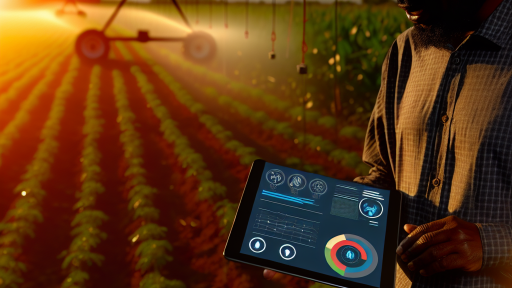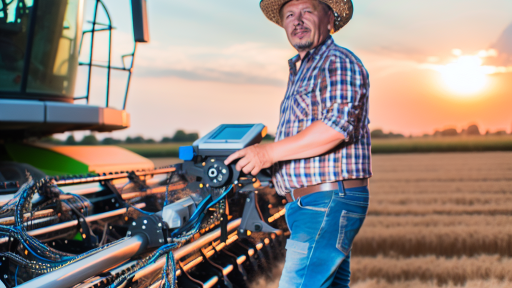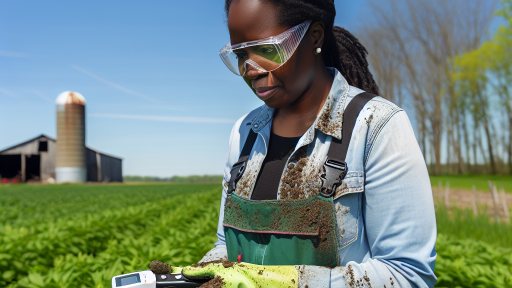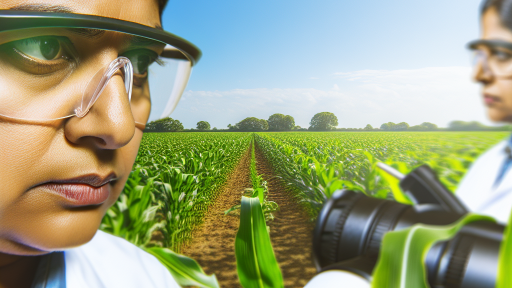Introduction to Crop Disease Detection Systems
Crop disease detection systems play a crucial role in modern agriculture.
These systems help farmers identify and manage plant diseases effectively.
They utilize various technologies to monitor crop health continuously.
Among these technologies, image analysis and sensors stand out.
Farmers can receive real-time alerts about potential diseases.
Consequently, timely intervention can reduce crop loss dramatically.
Overview of Disease Detection Technologies
Numerous technologies contribute to crop disease detection.
One prominent method involves remote sensing techniques.
These techniques analyze images from drones or satellites.
Another method includes the use of soil and plant sensors.
These sensors monitor moisture and nutrient levels diligently.
Moreover, machine learning algorithms enhance disease identification.
Benefits of Disease Detection Systems
Implementing disease detection systems offers several advantages.
First, they improve yield by managing disease outbreaks.
Second, they minimize the use of pesticides and fertilizers.
Transform Your Agribusiness
Unlock your farm's potential with expert advice tailored to your needs. Get actionable steps that drive real results.
Get StartedAdditionally, these systems enable precision farming practices.
Farmers can adopt targeted interventions instead of blanket treatments.
As a result, they can maintain healthier ecosystems.
Challenges Faced by Farmers
Despite their benefits, crop disease detection systems face challenges.
First, the initial setup costs can be significant.
Many farmers might struggle to afford advanced technologies.
Second, training is essential for effective system use.
Farmers need to understand operating procedures thoroughly.
Additionally, data interpretation can be complex.
Future Directions for Disease Detection
The future of crop disease detection looks promising.
Ongoing research focuses on making systems more accessible.
Innovations in technology aim to reduce costs significantly.
Moreover, user-friendly interfaces can simplify operation.
In the long run, these advancements will empower farmers further.
Ultimately, more efficient systems will ensure food security.
Common Challenges Faced by Farmers in Disease Detection
Lack of Access to Technology
Many farmers lack access to advanced disease detection technology.
This absence complicates early identification of plant diseases.
Consequently, farmers often experience significant crop losses.
High Costs of Disease Detection Systems
The costs associated with disease detection systems can be prohibitive.
Smaller farms may struggle to invest in these technologies.
This financial burden often leads to delayed implementations.
Insufficient Training and Knowledge
Farmers frequently have limited training in using detection systems.
This lack of knowledge can hinder effective disease management.
As a result, many farmers miss critical warning signs in crops.
Showcase Your Farming Business
Publish your professional farming services profile on our blog for a one-time fee of $200 and reach a dedicated audience of farmers and agribusiness owners.
Publish Your ProfileEnvironmental Variability
Variations in weather and soil conditions affect disease detection.
Farmers may find it difficult to interpret data accurately.
This uncertainty can lead to incorrect assessments of crop health.
Integration with Existing Practices
New technologies often struggle to integrate with traditional methods.
This disconnect can create confusion and resistance among farmers.
Farmers may prefer familiar practices over new technologies.
Reliability of Data Sources
Data sources for disease detection may not always be reliable.
Farmers need consistent and accurate information for effective decisions.
Unreliable data can lead to poor management strategies.
Overview of Current Technologies in Crop Disease Detection
Introduction to Crop Disease Detection
Crop disease detection is critical for maintaining agricultural health.
Farmers rely on effective technologies to identify diseases early.
Timely detection minimizes crop loss and enhances yield.
Remote Sensing Technology
Remote sensing technology utilizes satellite imagery and drones.
This technology provides a broad overview of crop health.
Farmers can monitor fields without being physically present.
Remote sensors detect changes in plant color and temperature.
These changes signal potential diseases or stress factors.
Machine Learning and AI
Machine learning algorithms analyze vast datasets.
Artificial Intelligence helps in making accurate predictions.
Farmers can use AI-driven apps for disease identification.
Scans of leaves can reveal signs of diseases rapidly.
This technology improves decision-making and resource allocation.
Mobile Applications
Several mobile applications assist farmers in disease detection.
These apps often provide visual references for common diseases.
Farmers can take pictures of infected crops for analysis.
They receive immediate feedback on potential diseases.
These tools empower farmers to react quickly and effectively.
Traditional Methods
Despite advancements, traditional methods still hold value.
Farmers often rely on expert consultations for diseases.
Visual inspections and symptom identification remain vital.
Community knowledge sharing also plays a crucial role.
Combining old and new techniques maximizes effectiveness.
Challenges in Current Technologies
While modern technologies are promising, challenges exist.
High costs can deter small-scale farmers from adoption.
Access to technology may vary significantly in regions.
Moreover, a lack of training hinders effective use.
Addressing these barriers is essential for widespread implementation.
Gain More Insights: Overcoming Financial Challenges In Farming With Agri-Fintech Tools
Importance of Early Detection in Crop Health Management
Enhancing Crop Yields
Early detection of crop diseases significantly boosts yields.
It allows farmers to respond quickly to emerging threats.
Showcase Your Farming Business
Publish your professional farming services profile on our blog for a one-time fee of $200 and reach a dedicated audience of farmers and agribusiness owners.
Publish Your ProfileThis proactive approach helps maintain healthy crops for harvest.
Preventing Economic Loss
Detecting diseases early reduces potential economic losses.
Farmers can treat affected areas before widespread damage occurs.
Moreover, minimizing crop loss directly impacts farm profitability.
Safeguarding Food Security
Food security relies on robust crop production systems.
Early disease detection contributes to stable food supply chains.
This ensures communities have access to necessary resources.
Adopting Sustainable Practices
Implementing early detection promotes sustainable agricultural methods.
It encourages integrated pest management and reduced chemical use.
Farmers can maintain ecological balance while protecting crops.
Utilizing Technology Advances
Technology plays a crucial role in crop disease detection.
Innovations like drones and AI enhance monitoring capabilities.
Additionally, these tools provide real-time data for informed decisions.
Building Resilience in Agriculture
Early detection fosters resilience in agricultural practices.
Farmers can adapt to changing environmental conditions effectively.
Thus, they build more sustainable farming systems over time.
Learn More: The Role Of Blockchain In Modernizing Agricultural Supply Networks
Integration of AI and Machine Learning in Disease Detection
The Role of AI in Agriculture
AI plays a crucial role in modern agriculture.
It enhances precision in various farming practices.
Machine learning algorithms analyze large datasets efficiently.
These datasets include weather patterns, soil health, and crop yields.
Ultimately, this analysis helps farmers make informed decisions.
Benefits of Machine Learning in Disease Detection
Machine learning significantly improves crop disease detection.
It identifies disease symptoms at early stages.
This early detection is vital for effective management.
Additionally, machine learning can reduce dependency on pesticides.
This leads to healthier produce and sustainable practices.
Challenges in Implementing AI Solutions
Despite its benefits, challenges remain in AI adoption.
High costs can deter many small-scale farmers.
Moreover, lack of technical know-how can hinder usage.
Farmers may struggle to interpret data and insights generated.
There is also a need for continuous training and support.
Strategies for Overcoming Challenges
Farmers can benefit from partnerships with tech companies.
Such collaborations foster knowledge sharing and support.
Implementing user-friendly interfaces can simplify technology use.
Moreover, training programs can enhance technical skills.
Finally, providing affordable solutions will encourage wider adoption.
Future Prospects of AI in Crop Disease Management
The future of AI in agriculture looks promising.
Advancements in technology will drive accuracy and efficiency.
Integrating real-time data collection systems is on the horizon.
Showcase Your Farming Business
Publish your professional farming services profile on our blog for a one-time fee of $200 and reach a dedicated audience of farmers and agribusiness owners.
Publish Your ProfileThese systems will provide timely alerts for disease outbreaks.
Ultimately, AI will empower farmers to safeguard their crops effectively.
Uncover the Details: Integrating IoT Solutions for Livestock Management
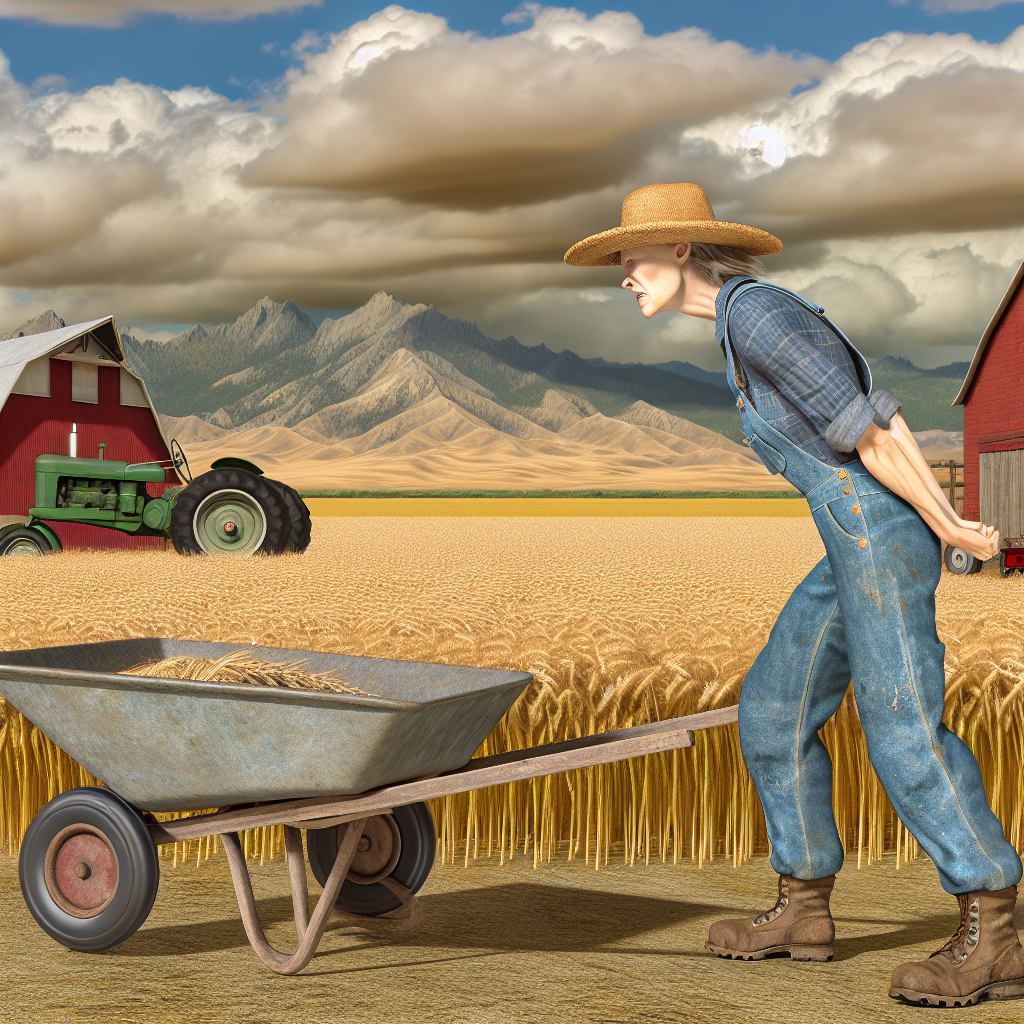
Training and Resources for Farmers to Utilize Detection Systems
Importance of Education and Training
Training provides farmers with essential skills for effective disease detection.
Proper education enhances their understanding of various crop diseases.
This knowledge empowers farmers to make informed decisions.
Available Training Programs
Various organizations offer training programs for farmers.
For example, the Agronomist Development Agency provides workshops in innovative techniques.
Moreover, the National Agricultural Institute offers online courses accessible to all farmers.
Essential Resources for Farmers
Farmers can access a variety of resources to aid their learning.
Webinars are a practical resource that provides visual assistance.
Additionally, informative videos on disease identification are widely available on platforms like YouTube.
Partnerships and Collaboration
Collaboration between farmers and agricultural extension services is vital.
These partnerships help in disseminating knowledge and resources effectively.
Local universities often work with farmers to share research findings.
Technology Integration in Training
Integrating technology enhances training programs significantly.
Mobile apps allow farmers to identify diseases quickly using images.
Furthermore, drones are increasingly used for real-time crop monitoring.
Building a Supportive Community
Creating a supportive community among farmers facilitates knowledge sharing.
Farmer cooperatives often hold meetings to discuss challenges and solutions.
Online forums are also beneficial for connecting with peers globally.
Continuous Learning and Adaptation
Continuous learning is essential in agriculture due to evolving challenges.
Farmers should regularly engage with new scientific research.
Staying updated on the latest technologies will enhance their capacity.
Discover More: Cloud-Based Farm Management Software Benefits For Farmers
Case Studies of Successful Implementations of Detection Systems
Farmers Utilizing AI-Driven Technology in Precision Agriculture
In 2021, Emma Callahan adopted AI technology on her farm.
This technology identified early signs of crop diseases efficiently.
As a result, she minimized crop loss significantly.
Emma reported a 30% increase in yield compared to previous years.
Her success inspired neighboring farms to follow suit.
Blockchain for Traceability in Crop Management
GreenField Farms implemented blockchain technology for crop tracking.
This initiative improved transparency and accountability in their processes.
Farmers could trace the origin of any crop disease quickly.
Consequently, they reduced the spread of diseases effectively.
This strategic move enhanced consumer trust in their products.
Drone Surveillance and Real-Time Monitoring
SkyTech Drones provided aerial monitoring services to farmers.
Farmers could detect crop diseases via real-time imaging.
This method allowed for prompt interventions and remedies.
One client reported saving 20% of his harvest through this system.
Moreover, the technology enabled farmers to save on pesticide costs.
Showcase Your Farming Business
Publish your professional farming services profile on our blog for a one-time fee of $200 and reach a dedicated audience of farmers and agribusiness owners.
Publish Your ProfileCollaborative Platforms for Knowledge Sharing
Agriculture United created a platform for farmer collaboration.
This platform facilitated knowledge sharing about disease detection.
Farmers exchanged insights regarding timing and treatment strategies.
The collective efforts led to a noticeable reduction in overall crop diseases.
Farmers also benefitted from shared resources and best practices.
Future Directions and Innovations in Crop Disease Detection Technology
Integration of Artificial Intelligence
Artificial intelligence enhances crop disease detection through data analysis.
Farmers can utilize machine learning algorithms to identify diseases.
This technology improves accuracy and speed in diagnosis.
AI systems continuously learn and adapt based on new data.
As a result, farmers can make informed decisions more effectively.
Advancements in Remote Sensing
Remote sensing technology allows for the monitoring of crop health from a distance.
Drones equipped with cameras capture high-resolution images of fields.
Farmers can analyze these images to spot early signs of disease.
This approach minimizes the need for manual inspections.
Consequently, it saves time and labor costs for farmers.
Blockchain for Traceability
Blockchain technology offers traceability in crop production.
This ensures transparent tracking from farm to consumer.
Farmers can quickly identify disease outbreaks linked to specific products.
Such transparency fosters trust with consumers and suppliers.
Additionally, it aids in more effective recall processes when needed.
Improved Training and Resources
Access to training programs empowers farmers with knowledge.
Workshops on disease management utilize the latest technologies.
Farmers gain skills to implement new detection tools effectively.
Resource centers can provide guidance on best practices as well.
Such initiatives bridge the gap between technology and practical application.
Collaboration with Research Institutions
Partnerships between farmers and research institutions facilitate innovation.
Cooperative research can develop tailored solutions for specific regions.
Researchers can provide insights into emerging disease threats.
This collaboration enhances crop resilience and sustainability.
Furthermore, it fosters a community of sharing knowledge and resources.
Embracing Citizen Science
Citizen science involves community participation in data collection.
Farmers can report observations of crop diseases using mobile apps.
This contributes to larger databases for analysis and research.
In addition, it engages local communities in agricultural sustainability.
Such initiatives can lead to faster detection of widespread issues.
Additional Resources
USDA Science and Research Strategy, 2023-2026: Cultivating …

